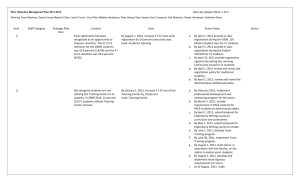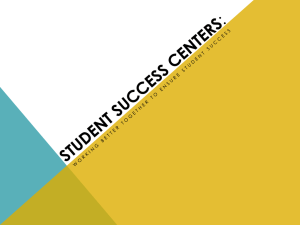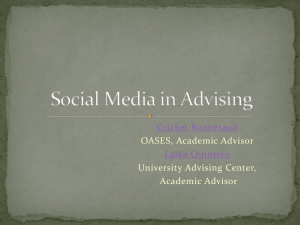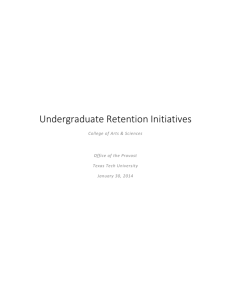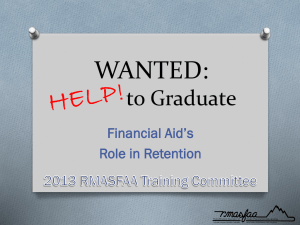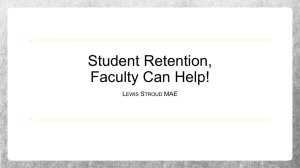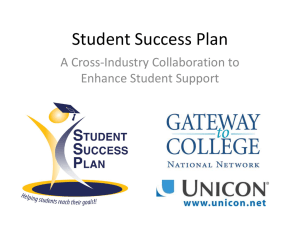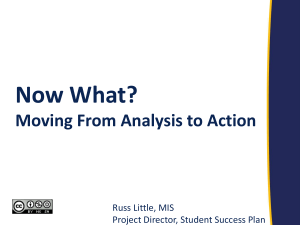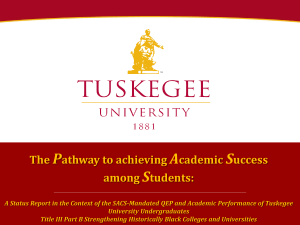NCDA CONFERENCE SESSION - The Career Center
advertisement
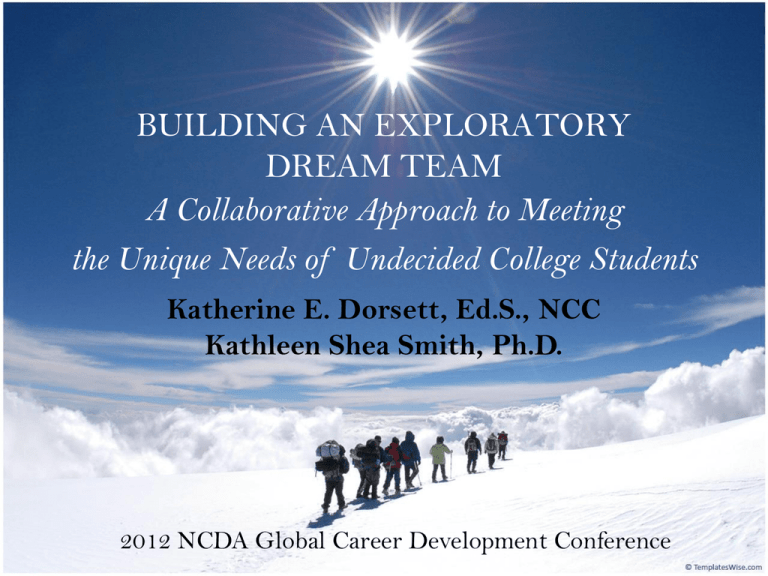
BUILDING AN EXPLORATORY DREAM TEAM A Collaborative Approach to Meeting the Unique Needs of Undecided College Students Katherine E. Dorsett, Ed.S., NCC Kathleen Shea Smith, Ph.D. 2012 NCDA Global Career Development Conference Today’s Presentation • • • • • Higher Education Under Scrutiny Benefits of Higher Learning Dreams versus Reality Targeting Special Populations Meeting the Challenges of Undecided Students • Tough Times Call for Tough Measures • Collaboration in Action Recent Economic Trends • Rising Costs of Higher Education • Increase in Students Receiving Financial Aid • Reduced State Funding • Greater Demand for Accountability and Student Outcome Data Economic Benefits of a College Degree 2011 Bureau of Labor Statistics Data Unemployment Rate Education Attained Median Weekly Earnings 2.5 Doctoral degree 1,551 2.4 Professional degree 1,665 3.6 Master’s degree 1,263 4.9 Bachelor’s degree 1,053 6.8 Associate degree 768 8.7 Some college 719 9.4 High-school Diploma 638 14.1 Less than a high school diploma 451 Additional Benefits of a College Degree College Board’s Education Pays 2010 College Educated Adults are More Likely to: Receive Health Insurance Have Pension Benefits Be More Satisfied with their Jobs Engage in their Communities Lead Healthier Lifestyles Engage in Educational Activities with their Children Disconnect Between Dreams and Reality • Only 57.7% of first-time students who sought a bachelor’s degree completed it within 6 years. -The College Completion Agenda • Only 77.1% of students who begin college will continue into their second year. -NCES, IPEDS Fall 2010 Enrollment Retention Rate File 2010 ACT Results • 94 Interventions/Services • 258 Chief Academic Officers -Incidence rates -Contributors to retention • Cross Analysis Revealed -Advising special populations as highest ranked intervention contributing to student retention Informed by Research • When plans remain unformulated over extended periods of time, students are more likely to depart without completing their degree programs (Tinto, 1993, p. 41). • College students clearly need support from effective advisors to negotiate the challenging process of educational planning and decisionmaking (Cuseo, 2008). Setting the Stage: Advising Challenges • Students Required Comprehensive Approach • Lack of Knowledge and Training on Career Integration • Misconceptions of Undecided Population • High Student to Advisor Ratio • Limited Resources Setting the Stage: Career Center Challenges • Perceptions of Career Services • Mixed Messages from Administration • Time Intensive Nature • Limited Resources • Population Specific Training • Lack of Academic/Referral Knowledge The FSU Partnership • • • • • • • • History & Initial Contact Consistent Approach Staff Cross-training Create Shared Documents Effective Referrals Shared Programming Evaluation & Research Conference Participation FSU’s Exploratory Program • Largest Major for Freshman • Based on Leading Research in Career Development and Academic Advising • Structured and Mandatory • Retention Rate has Increased by 5% • Declaration Rate 99% • Outstanding Program Award Collaboration in Action Ten Tips for Partnerships 1) Take a Pro-active Approach 2) Discuss Shared Missions and Goals 3) Identify Resources 4) Find Community Partners 5) Create Print and Electronic Collaborative Resources Ten Tips for Partnerships 6) Co-present and Cross-train staff 7) Appoint Liaisons 8) Evaluate and Share Best Practices with Stakeholders 9) Connect with Professional Associations 10) Partner in Programming References ACT Research and Policy Issues: What Works in Student Retention Retrieved from http://www.act.org/research/policymakers/reports/retain.html Bureau of Labor Statistics. (2012). Education pays. Retrieved from http://www.bls.gov/emp/ep_chart_001.htm College Board Advocacy and Policy Center. (2012). College completion agenda. Retrieved from http://completionagenda.collegeboard.org/graduation-rates-bachelor’sdegree-seeking-students College Board. (2010). Education pays. Retrieved from http://trends.collegeboard.org/downloads/Education_Pays_2010_In_Brief.p df Cuseo, J. (2003a). Academic advisement and student retention: Empirical connections and systemic interventions. National Academic Advising Association. Retrieved from http://www.uwc.edu/administration/academicaffairs/esfy/cuseo/Academic%20Advisement%20and%20Student%20Retenti on.doc References Cuseo, J. (2003a). Academic advisement and student retention: Empirical connections and systemic interventions. National Academic Advising Association. Retrieved from http://www.uwc.edu/administration/academicaffairs/esfy/cuseo/Academic%20Advisement%20and%20Student%2 0Retention.doc Lenz, J. G., McCaig, K., & Carr, D. (2012). Career services and academic advising: Collaborating for student success. NACE Journal. National Center for Education Statisics. (2012). The condition of education. Retrieved from http://nces.ed.gov/programs/coe/ NCES, IPEDS Fall 2010 Enrollment Retention Rate File. Retrieved from http://www.higheredinfo.org/dbrowser/index.php?submeasure=22 3&year=2010&level=nation&mode=data&state=0 Tinto, V. (1993). 2nd Edition. Leaving College: Rethinking the causes and cures of student attrition. 2nd Edition Chicago: University of Chicago Press. Contact Information Kathy Dorsett, Ed.S, NCC Assistant Director, Career Counseling, Advising, and Programming Florida State University Career Center (850) 644-9778 Kdorsett@admin.fsu.edu Kathleen Shea Smith, Ph.D. Associate Director, Advising First Florida State University (850) 645-2471 KSSmith@admin.fsu.edu Thank You! www.career.fsu.edu/techcenter/
